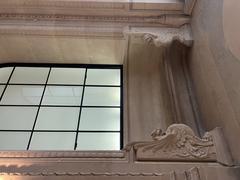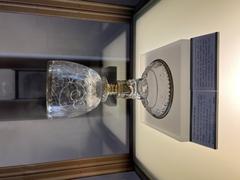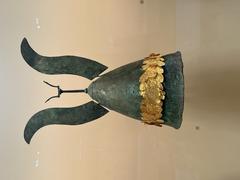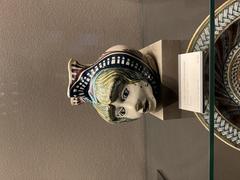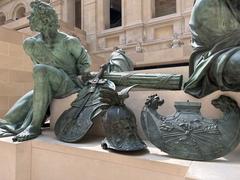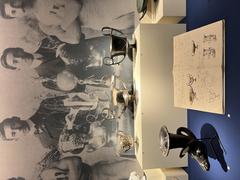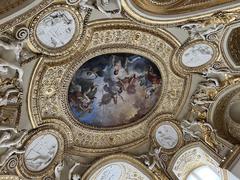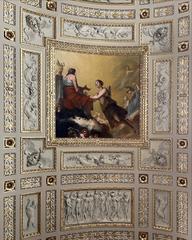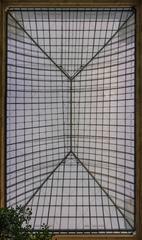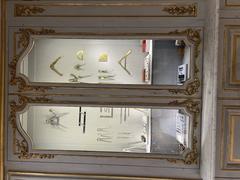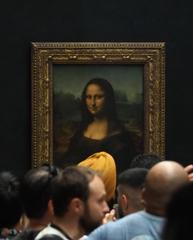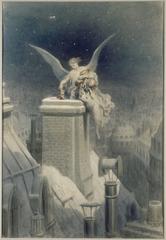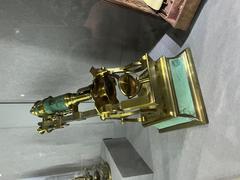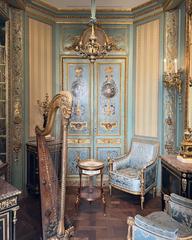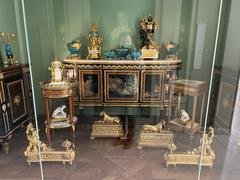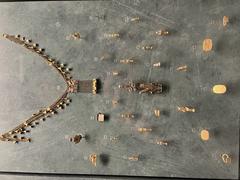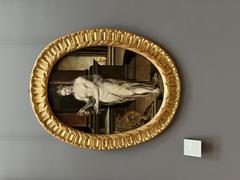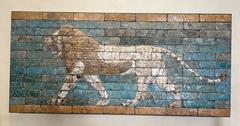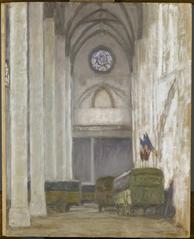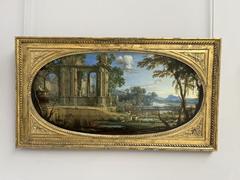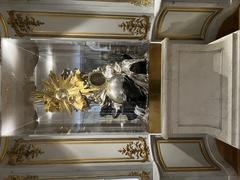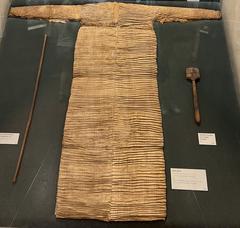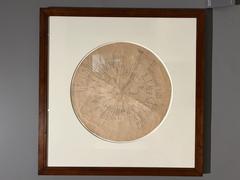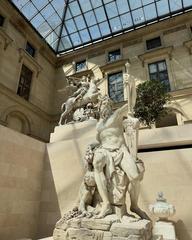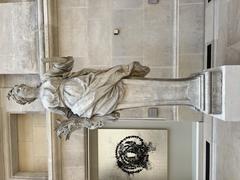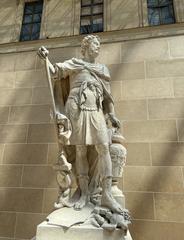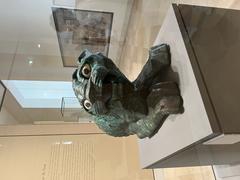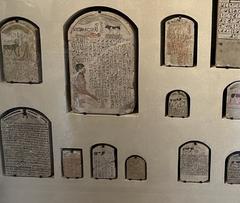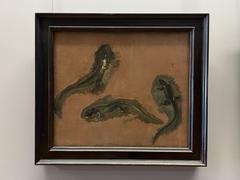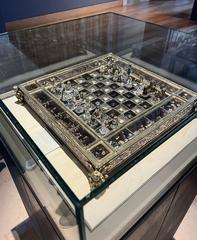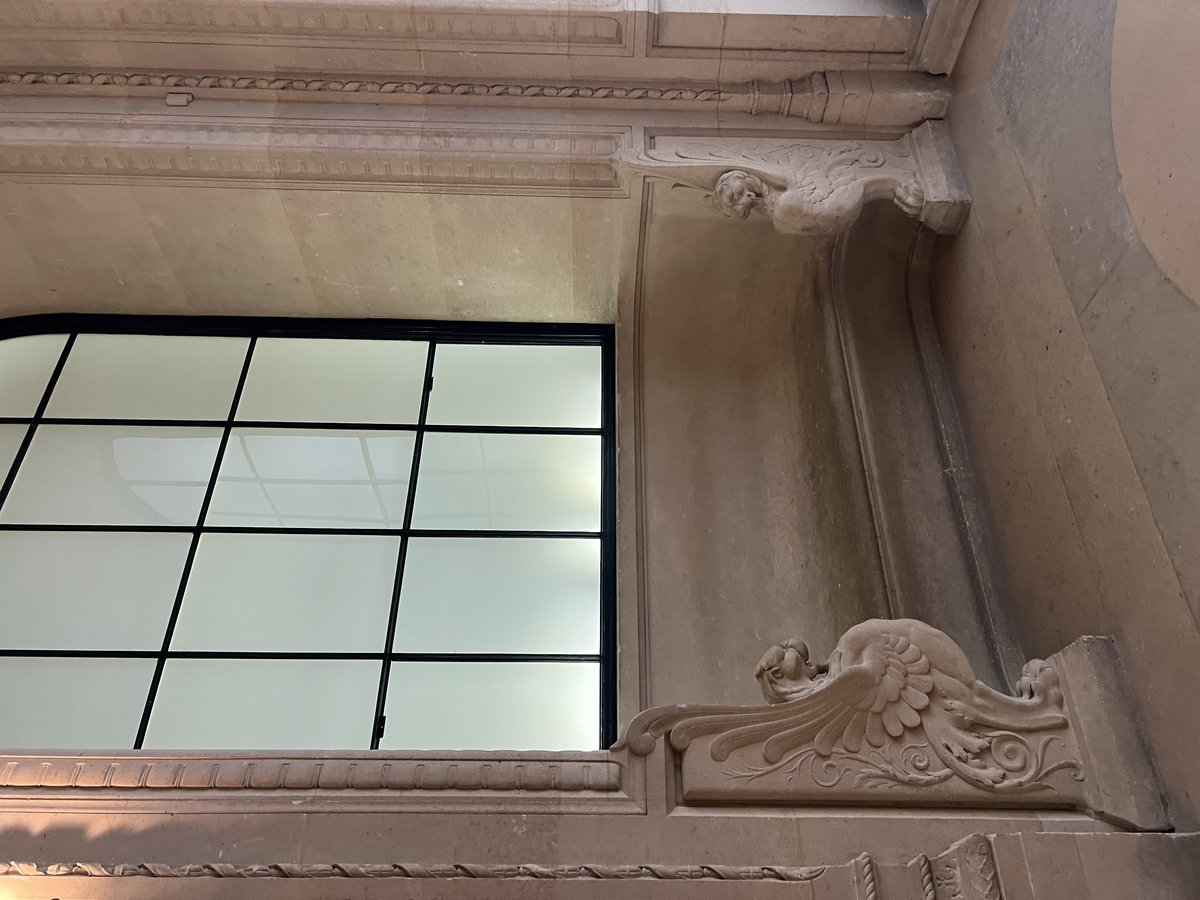
Louvre Museum Paris: Visiting Hours, Tickets, and Comprehensive Visitor Guide
Date: 14/06/2025
Introduction
The Louvre Museum in Paris is a celebrated icon of art, history, and culture, attracting millions of visitors each year. Originally constructed as a fortress in the 12th century, it has evolved through the centuries into a royal palace and, since 1793, a world-renowned public museum. Today, the Louvre’s vast collections—spanning from ancient civilizations to the 19th century—are displayed within a complex of remarkable architectural styles, including the famed glass pyramid entrance. This guide offers everything you need to plan a successful visit: historical context, ticketing details, visitor tips, accessibility information, and highlights of the museum’s must-see masterpieces. For the latest updates, always refer to official resources and trusted travel guides (mymodernmet.com; Louvre Official; Earth Trekkers).
Table of Contents
- Historical Overview and Architectural Evolution
- Louvre Museum Collections
- Visiting the Louvre: Practical Information
- Iconic Masterpieces and Must-Sees
- Special Exhibitions & Events (2025 Bicentennial)
- Visitor Tips and Navigation
- Nearby Attractions
- Museum Etiquette and Security
- Enhancing Your Visit: Tours and Workshops
- Frequently Asked Questions (FAQs)
- Conclusion
- References and Further Reading
Historical Overview and Architectural Evolution
Medieval Origins
The Louvre’s origins trace back to the late 12th century, when King Philippe Auguste commissioned a fortress to defend Paris from invasion. Remnants of these medieval foundations can still be viewed in the museum’s basement, offering a rare glimpse into the city’s past (mymodernmet.com; myparisitinerary.com).
Royal Transformation and Renaissance Expansion
By the 14th century, the fortress became obsolete as a defensive structure and was transformed into a royal residence by Charles V. The Renaissance saw King Francis I and architects like Pierre Lescot infuse the palace with classical and ornate elements, setting the stage for its later grandeur (theartbog.com).
Becoming a Public Museum
The pivotal transformation came during the French Revolution, when the Louvre opened as a public museum in 1793, democratizing access to art. Subsequent expansions by Napoleon I and III led to the current U-shaped layout (mymodernmet.com).
Modern Innovation: The Glass Pyramid
The glass pyramid designed by I. M. Pei, unveiled in 1989, now serves as the main entrance—symbolizing the museum’s harmonious blend of tradition and modernity (theartbog.com).
Louvre Museum Collections
The Louvre’s collections span over 35,000 works, divided into eight departments:
- Egyptian Antiquities: Artifacts from over 4,000 years of Nile Valley history, including the Seated Scribe and Great Sphinx of Tanis (Museum.travel).
- Near Eastern Antiquities: Highlights include the Code of Hammurabi and Assyrian reliefs.
- Greek, Etruscan, and Roman Antiquities: Featuring the Venus de Milo and Winged Victory of Samothrace.
- Islamic Art: Ceramics, textiles, and manuscripts from across the Islamic world.
- Sculpture: Works by Michelangelo and other European masters.
- Decorative Arts: Royal crowns, jewelry, and Napoleon III’s apartments.
- Paintings: Over 7,500 works spanning Italian, French, Dutch, and Spanish masters.
- Prints and Drawings: Works by Leonardo da Vinci and Rembrandt, accessible by appointment.
For a detailed department overview, visit the official Louvre site.
Visiting the Louvre: Practical Information
Visiting Hours
- Open: Every day except Tuesday, January 1, May 1, and December 25
- Standard Hours: 9:00 AM to 6:00 PM
- Late Openings: Wednesdays and Fridays until 9:45 PM
- Last Entry: One hour before closing; galleries begin closing 30 minutes before museum closing time (Louvre Official)
Tickets and Booking
- Online Price: €22 (as of June 2025)
- Free Admission: Under 18s, EEA residents aged 18–25, and other eligible categories (Louvre free admission)
- Advance Booking: Strongly recommended for all, even for free admission categories. Reserve your preferred time slot (Earth Trekkers).
- Paris Museum Pass: Includes Louvre entry but requires time-slot reservation.
- Combined Ticket: Grants access to the Louvre and Musée National Eugène-Delacroix.
Entrances
- Pyramid Entrance: Main and most iconic, but often crowded.
- Carrousel du Louvre: Underground, typically less busy.
- Porte des Lions: Occasionally open, check on the day.
- Richelieu Passage: Reserved for groups and Museum Pass holders (Earth Trekkers).
Accessibility
- Wheelchair Access: Elevators, ramps, and adapted restrooms available.
- Assistance: Free admission for disabled visitors and their companions; wheelchairs and folding seats available upon request.
- Facilities: Cloakrooms, restrooms, cafés, and restaurants are located throughout the museum (Louvre accessibility).
Getting There
- Metro: Palais Royal – Musée du Louvre (Lines 1 & 7), Pyramides (Line 14)
- Bus: Multiple lines serve the area.
- Bicycle: Vélib’ stations nearby.
- Car: Underground parking at Avenue du Général Lemonier; public transport is recommended (Talk Travel).
Iconic Masterpieces and Must-Sees
- Mona Lisa (Leonardo da Vinci): Denon Wing, Room 711—arrive early or late to avoid crowds (The Tour Guy).
- Winged Victory of Samothrace: Atop the Daru staircase.
- Venus de Milo: Sully Wing, Room 346.
- The Raft of the Medusa (Géricault): Denon Wing, Room 700.
- Liberty Leading the People (Delacroix): Denon Wing.
- The Coronation of Napoleon (David): Denon Wing.
- Code of Hammurabi: Near Eastern Antiquities.
- Seated Scribe: Egyptian Antiquities.
Special Exhibitions & Events (2025 Bicentennial)
To mark 200 years as a public museum, the Louvre is hosting special exhibitions in 2025:
- Mamluks: A European First (April 30 – July 28)
- A Passion for China: The Adolphe Thiers Collection (May 14 – August 25)
- Louvre Couture: Art Objects, Fashion Objects (January 24 – July 21) Interactive workshops and family activities will also be featured (Traveling Season).
Visitor Tips and Navigation
- Plan Your Visit: Prioritize specific departments or works of art; it’s impossible to see everything in one trip.
- Maps & Audio Guides: Use the interactive map and rent an audio guide for expert commentary (Travel Binger).
- Entrances: Consider lesser-used entrances to reduce wait times.
- Timing: Early morning, late afternoon, or late-night hours are best for lighter crowds.
- Duration: Allocate at least 2–4 hours; art enthusiasts may want a full day.
- Facilities: Use cloakrooms for small bags; large items must be checked.
Nearby Attractions
- Tuileries Garden: Perfect for a stroll or picnic.
- Palais Royal: Historic palace and gardens close by.
- Seine River: Offers scenic walks and boat tours.
- Musée National Eugène-Delacroix: Access included with combined ticket.
Museum Etiquette and Security
- Respect the Art: No touching, eating, drinking, or loud behavior in galleries.
- Photography: Allowed without flash in most areas; restrictions may apply in select galleries.
- Security: All visitors undergo security screening; allow extra time during peak periods.
Enhancing Your Visit: Tours and Workshops
- Guided Tours: Available in multiple languages, often include skip-the-line access (Earth Trekkers).
- Audioguides: Provide thematic routes and expert commentary.
- Workshops and Family Activities: Especially during special exhibitions (Traveling Season).
Frequently Asked Questions (FAQs)
Q: What are the Louvre’s visiting hours?
A: 9:00 AM to 6:00 PM daily except Tuesdays, with late hours until 9:45 PM on Wednesdays and Fridays.
Q: How do I buy tickets?
A: Book online via the official Louvre website for guaranteed entry. Onsite tickets are limited and not always available.
Q: Is the Louvre accessible for visitors with disabilities?
A: Yes, the museum is fully accessible, with free admission for disabled visitors and their companions.
Q: Can I re-enter the Louvre on the same ticket?
A: No; each ticket allows single entry only.
Q: Are guided tours and audioguides available?
A: Yes, both are available and recommended for a richer experience.
Q: Are there free admission times?
A: Yes, under 18s, EEA residents aged 18–25, some professionals, and all visitors on the first Friday of each month after 6:00 p.m. (except July and August) enjoy free access (Louvre free admission).
Q: What should I bring?
A: Comfortable shoes, light clothing, and minimal baggage.
Conclusion
A visit to the Louvre Museum is a highlight of any Paris trip, offering a journey through centuries of artistic achievement and cultural evolution. By planning ahead—knowing the visiting hours, ticketing options, and accessibility features—you can make the most of your experience. Utilize guided tours, audio guides, and interactive maps to navigate the vast galleries, and don’t miss the opportunity to explore nearby Parisian landmarks. For ongoing updates, exclusive content, and travel tips, download the Audiala app and follow official channels.
References and Further Reading
- mymodernmet.com
- theartbog.com
- museum.travel
- myparisitinerary.com
- openculture.com
- tootbus.com
- journeytofrance.com
- outlooktraveller.com
- Travel Binger
- Talk Travel
- Earth Trekkers
- Traveling Season
- The Tour Guy
- Louvre Official Website
